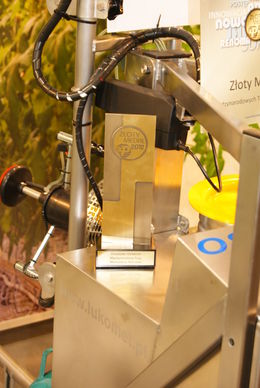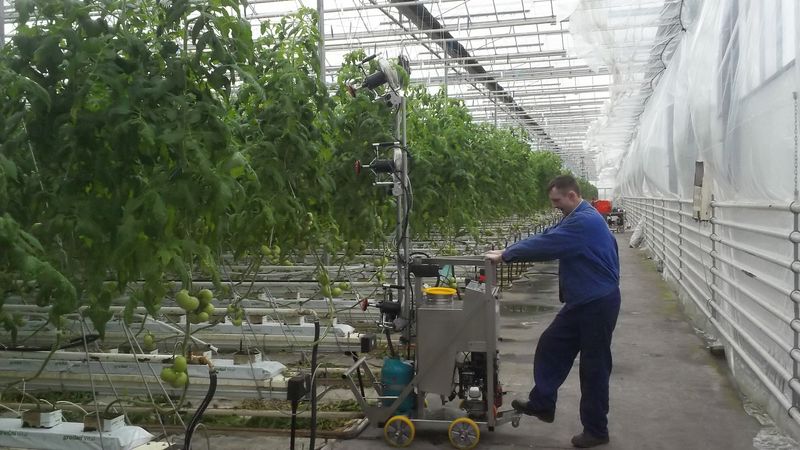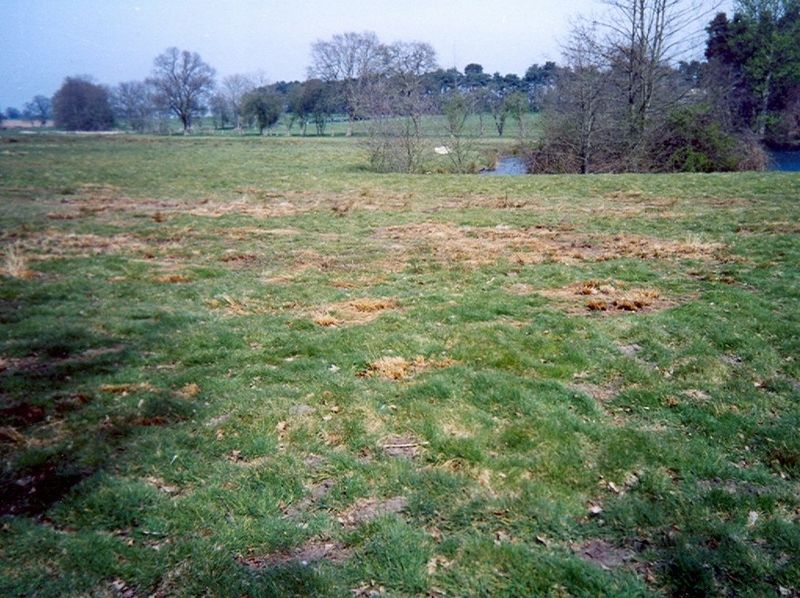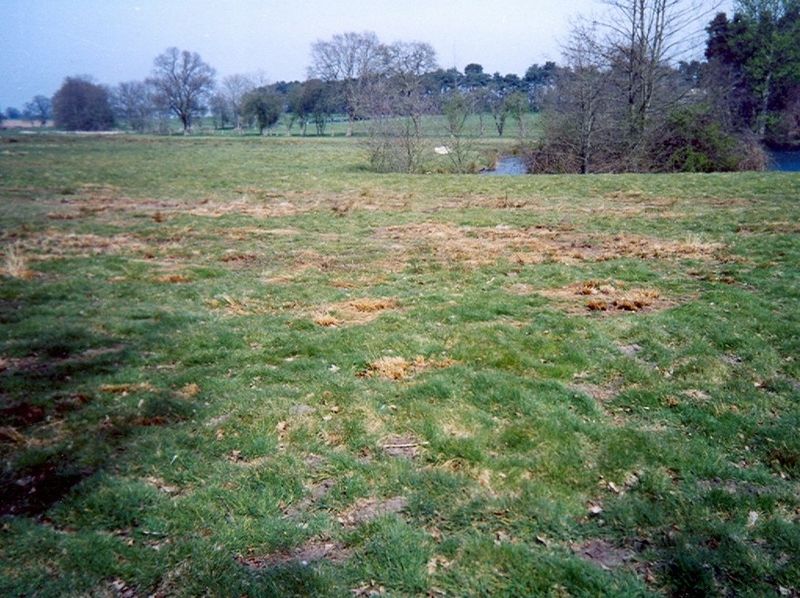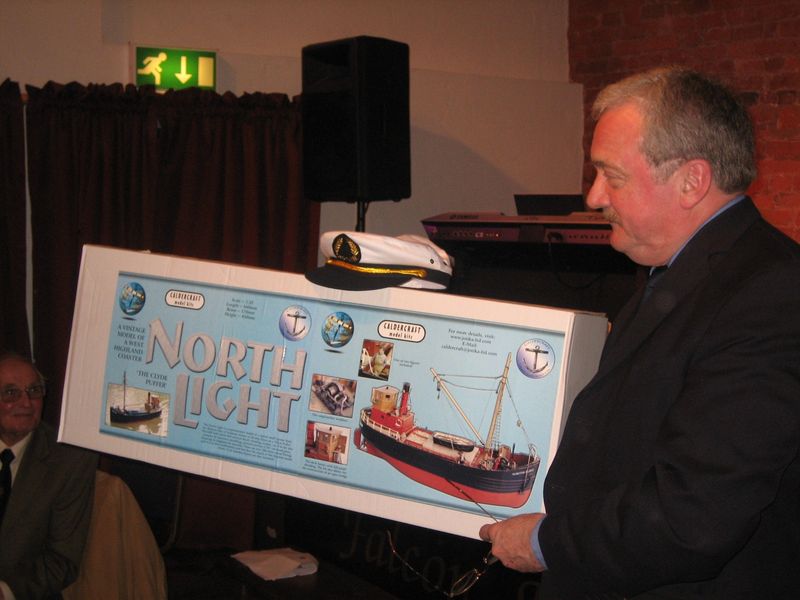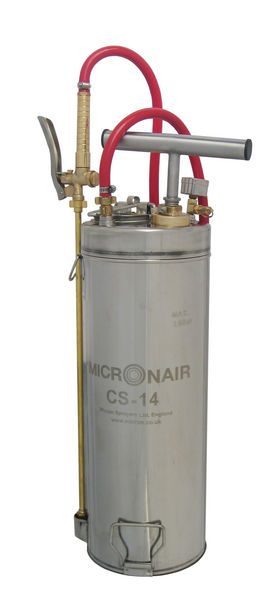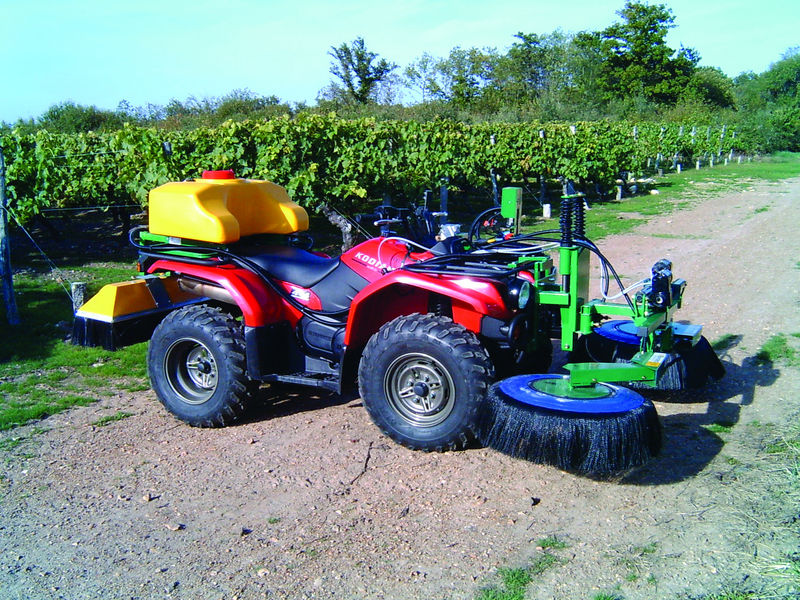
Grapes as dessert fruit or for fermenting wine are grown throughout Europe in a broad range of climate, weather, topography and soils. The grapevine thrives in diverse situations including rich cool slopes of the Rhine Valley in Germany, the dry soil of Sicily and the mild maritime climate of southern England and most of Eastern Europe.
Grapevines are susceptible to a wide range of arthropod pests and fungal diseases. The exact pest profile and yield threat will depend on prevailing environmental conditions in the country or region, but weeds present the most uniformly common threat to yield because wherever grapevines grow weeds are not far behind and usually in front.
Weed damage and control
There are many facets to weed cover and damage caused in vineyards and grapevines, and likewise by the application methods and herbicides used to manage them. Weeds damage grapevines and negatively impact on yield and quality by:
- competing with the vines for water and nutrients
- providing alternative host plants and infestation/infection points for arthropod pests and diseases
- aggravating pest infestation and pathogen infection by encouraging high humidity under and within the vine canopy
- shading low fruit bunches and inhibiting development
Weed control considerations that must be taken into account include:
- Use of control methods and pesticide application techniques able to cope with the inherent nature of successful weed species. A successful weed is invariably more versatile than the crop, and especially so at the start of the growing season when weeds have a clear head start over vine growth and re-foliation.
- Risk of soil and root damage is high at start of the season when the ground is still wet from winter rainfall. Soils may be so saturated that growers are unable to get their conventional high volume sprayers into the vineyard. Weeds receive an even bigger head-start, making control that more difficult once soil conditions improve enough for spraying to take place.
- The most successful weed species flower and set seed during the whole year (ephemerals) and have short seed maturation periods and minimal germination requirements. The net result is huge and constantly threatening seed banks with weed seedlings germinating, establishing and growing for most of the year. Growers are forced to make repeat sprays later in the year when vine growth and fruit bunch development is advanced. Room to manoeuvre spray machinery in the correspondingly reduced space demands smaller and more discrete sprayers.
- Conventional hydraulic sprayers require large volumes of spray mixture. Vineyard owners are hampered and held back when soil is too wet to support heavyweight high volume sprayers carrying large volumes of spray mixture, and requiring correspondingly more powerful and heavy vehicles to move them along the rows of vines. There is also a higher risk of soil compaction and damage down into the root zone and aerial damage to vines when using larger and heavier units.
- The number of days suitable for herbicide spraying is reduced by wind with the accompanying risk of spray drift and chemical damage to the vines. Using traditional sprayers in windy conditions not only puts the crops at risk – foliage, fruit and even the vine itself – but also areas much further afield, beyond the vineyard and into the environment at large.
- Use of pesticides is under increasingly tight scrutiny and nowhere more so than in the European Union (EU). Close monitoring of pesticide residues and contamination in harvested grapes, wine and the environment, especially water resources, is carried out across the EU. The choice of pesticide application technique is critical in protecting the commercial future of many currently used actives which are crucial enable continued economic pest, disease and weed control in viticulture. Spray application techniques which minimise chemical usage while eliminating spray drift offer a clear way forward.
Controlled Droplet Application (CDA) techniques using rotary atomisers to generate and apply herbicides in uniformly-sized droplets go a long way to satisfy requirements for efficient and drift-minimising application techniques. CDA technology ensures that the droplets are accurately targeted onto weed plant targets with minimum spray drift. Spray volume and amount of spray mixture carried is reduced as is the weight of sprayer and size of vehicle required to support and move it. When the rotary atomisers are shielded by fitting domes, spray drift is all but eliminated, with contact and coverage ensured even when using minimal spray volume and doses.
Micron Group is the leading designer and manufacturer of CDA sprayers that offer vineyard growers all the above mentioned benefits. Its Enviromist range of CDA sprayers was first used to control weeds in the vineyards of South Australia and has since been adopted by vineyards across Europe and in the Americas.
Traditional hydraulic sprayers are hampered by having to haul large volumes of spray mixture up and down the rows between closely spaced vines. Enviromist CDA sprayers overcome these problems by offering a range of benefits including:
- formation, generation and delivery of optimally sized spray droplets within a narrow size spectrum
- the rotary atomisers are covered by plastic shields to minimise loss of spray droplets to the atmosphere thereby essentially eliminating spray drift
- significantly reduced spray volumes (10-40 litres per hectare), compared with traditional high volume sprayers, allows use of small lightweight spray tanks for mounting on ATVs and small tractors.
Enviromist CDA equipment is available in Undavina, Spraymiser and Spraydome ranges specifically designed for vineyard applications.
Undavina offers a highly effective way of controlling weeds growing around the base of vines. Available in a range of sizes, it features freely rotating shielded heads which ensure precision application and eliminate drift. Furthermore, the shield efficiently contains the spray under the hood thus safeguarding the valuable vines from spray contact. Undavina can handle more rugged terrain and can even be used over small rocks and irrigation sprinklers. Plants are further protected by the innovative Enviromist breakaway system which gently deflects and rolls around plants reducing mechanical damage and allowing to spray right up to the vine.
The Spraymiser units are designed for centre-row weed control, and are light enough for mounting on an ATV as well as a tractor. The range incorporates vertical plane CDA technology and a re-circulating system to deliver low application rates and increased chemical efficiency. Spraymiser’s shielded design eliminates spray drift which means the machines can be used even in windy conditions.
The Spraydome range has been specifically created for treating weeds around tender stems in young plantings. The CDA atomisers are fully covered by a dome-shaped plastic shield which fully eliminates the risk of spray drifting onto the plants and the surrounding environment. Spraydome is also fitted with the proven breakaway system to provide a gentle, rolling effect round the young vines.
Enviromist CDA equipment allows growers to ‘get out’ and make crucially important early season sprays, even in very wet springs, and therefore deprive weeds of an extra head start. The ability to greatly reduce volumes to 10-40 l/ha compared with the 100-400 l/ha or more typically used by conventional hydraulic high volume sprayers, means less down time and quicker turn-around times. CDA technology also means ‘controlled dosage application’ with opportunities to minimise chemical usage. Moreover, Enviromist’s ‘roll around’ design avoids the growth checks on vines through plant damage or soil compaction caused by heavier, more intrusive and less accurate sprayers.
Testing time for different systems
Weed control techniques used in vineyards are under the spotlight for cost effectiveness and need to comply with tightening environmental and safety legislation. Only way to distinguish between the wide variety of herbicide application options, and non-chemical methods, is through field trials under commercial conditions. Italian scientists at Turin University have recently conducted such trials.
Work was carried out by the Mechanics Section in the Department of Agricultural, Forestry and Environmental Economics and Engineering at the University of Turin, to compare innovative application technologies for under-vine weed control. Trials took place at ‘Terruta Cannona’, a wine-grape experimental station in Carpeneto AL (Piedmont Region, Northern Italy), inside a Cortese grape variety vineyard of 1 hectare using ‘Guyot’ growing system with vines in a 2.8 m (between rows) planting arrangement. Herbicide used was glyphosate applied twice per year, once at the beginning of May and again in mid October. Weed cover was assessed before and after treatments (30 days). Most frequently found weed species were the broad-leaved Stellaria media, Veronica arvensis, Veronica persica, Setaria viridis, Convolvulus arvensis and Chenpodium album and the grasses Lolium multiflorum, Alopecurus myosuroides and Bromus mollis.
Six application techniques were compared with each other and the zero treatment control.
- Traditional hydraulic boom sprayer mounted on the front of a tractor. Boom width was adjusted according to inter-row width with Teejet 6502 slot nozzle at each end to apply herbicide mixture on the ground beneath the vines on each side of the sprayer.
- Traditional hydraulic sprayer as above but fitted with an electronic system to control application of herbicide according to weed cover, as detected and determined by optical sensors at each nozzle.
- Traditional hydraulic boom sprayer covered to reduce spray drift using a boom equipped with Teejet TXB02 nozzles.
- Environmist CDA is carried along the rows on a four-wheel drive quad bike. Mounted on front of the quad bike, a steel frame supports two adjustable arms (one on each side). Each is equipped with a rotary atomiser completely shielded by a plastic bell-shaped dome. The inter-row area is sprayed by three shrouded rotary atomisers fixed to a second 1.5 m steel frame mounted at the back of the quad bike which is also equipped with automatic cruise control allowing the operator to set and maintain desired speed for the entire spray application.
- Tractor mounted machine combining mechanical and chemical weeding. It features a disc with eight rotary hoes and a dedicated ‘sprinkling system’ applying spray mixture through a Teejet OC 03 nozzle.
- Trolley-towed flame weeder included for appraisal as an option for organic (zero pesticide) wine growers.
Results were compared and conclusions drawn on a wide range of commercial considerations, including spray volume and chemical dosage used and cost effectiveness.
The Enviromist CDA sprayer applied the least spray volume at just 4 l/ha, an impressive 18 times less than the next lowest which was the hydraulic sprayer fitted with optical sensors. Herbicide dose applied by the Enviromist CDA sprayer was correspondingly lower than all other treatments at just 0.7 litres of product/ha compared with the 2.5 litres used by the hydraulic sprayer with optical sensors. The Enviromist CDA sprayer recorded the highest (best) ratio of weed control to herbicide dose. Weeding efficiency indexes were calculated at 100, 60, 41, 17 and 16 for, respectively, Enviromist CDA, hydraulic boom optical sensor, mechanical/sprinkler system, hydraulic boom, covered hydraulic boom.
The report states that the cost benefit of the Enviromist CDA sprayer with reduced spray volume and minimal chemical dosage (giving an exceptionally high weed control efficiency index), were particularly attractive where several applications are traditionally required during the season, especially in larger vineyards.
Commercial results
Micron Group’s French branch also carried out comparative trials at the La Loge Saint Leger vineyard (Guitres 33, France) from 2006-2008 using a quad-mounted Undavina 600 model. Calculations comparing Enviromist CDA equipment and the previously used herbicide application technique (traditional hydraulic spray equipment using high volumes) revealed considerable savings in contact and systemic herbicides used to control weed growth within and between rows of vines.
Savings of over 30% in the amount of a systemically acting herbicide (glyphosate and aminotriazole) through Enviromist CDA equipment was demonstrated compared with recommended dose rates with high volumes techniques. Lower but still substantial reductions were achieved with a contact herbicide (glufosinate-ammonium) using Enviromist CDA equipment.
Additional benefits and savings were also obtained, although these are less quantifiable in terms of cost. Most notable were the massive reductions in water usage and better application timing with execution of application not being dependent on prevailing wind direction and speed and, additionally, benefit to vines and soil through using light-weight and less intrusive herbicide application equipment.
